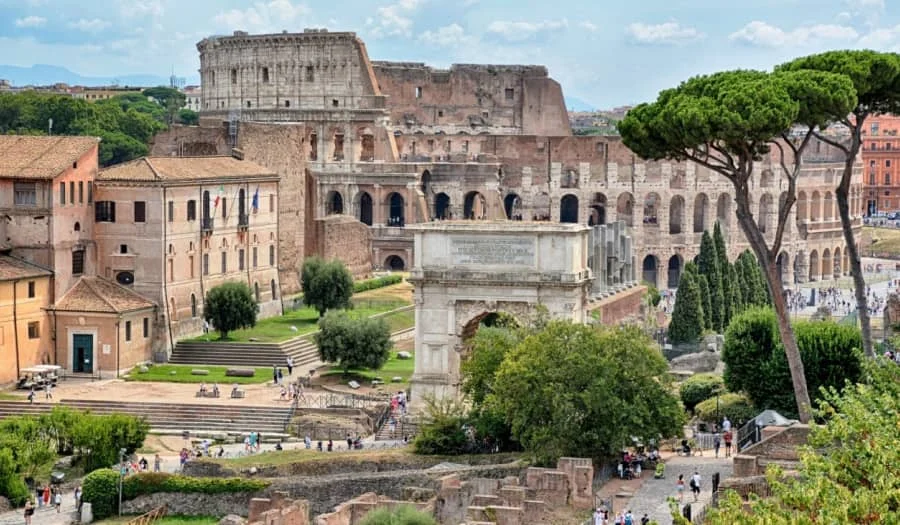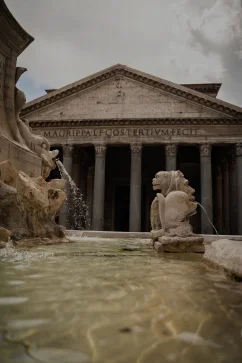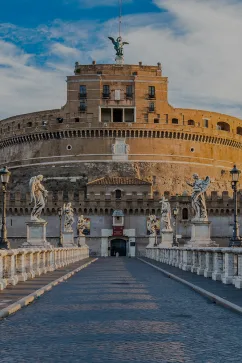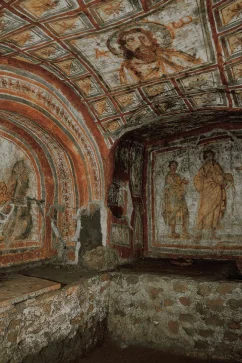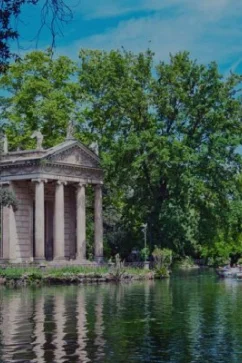Roman Forum & Palatino
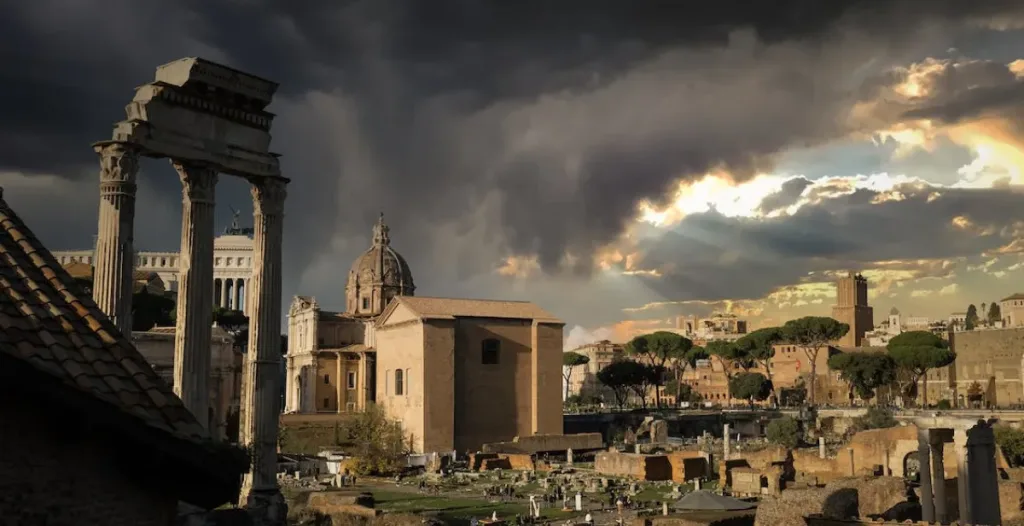
About the Roman Forum & Palatino
The Roman Forum and Palatino Hill, nestled in the heart of Rome, offer a captivating journey through the ancient past of the Eternal City. The huge Roman Forum, also known as Foro Romano, is a stunning archaeological monument from the time of the Roman Empire. Roman Forum entrance serves as a glimpse into an earlier time when bustling markets, magnificent temples, and public gatherings once thrived. Adjacent to the Roman Forum stands the majestic Palatino, or Palatine Hill, an iconic vantage point where emperors once resided. Its entrance, Palatine Hill Entrance 590, beckons visitors to explore the very cradle of Roman civilization.
Visitors may see the visible remains of an empire that once spanned the globe while exploring these historical Roman sites. With breathtaking ancient Roman ruins around every corner, the Roman Forum and Palatino Hill are testaments to the grandeur and elegance of ancient Rome. A visit to the Roman Forum and Palatino is a journey back in time where one may be awed at the remarkable heritage of an extraordinary civilization that has profoundly influenced history. It’s an archaeological and historical journey not to be missed when exploring the treasures of Rome.
History of the Roman Forum & Palatino
Roman Forum history dates back to the 7th century BC when it evolved from a humble marshy valley into the vibrant heart of the city during the Roman Republic and Empire. It served as the political, religious, and commercial epicenter, housing temples, government buildings like the Senate House (Curia Julia), and magnificent arches such as the Arch of Septimius Severus. It bore witness to pivotal moments in history, including the impassioned speeches of Cicero and the fateful funeral of Julius Caesar. As Rome’s dominance decreased, the Forum gradually fell into disrepair and was gradually buried beneath layers of time.
The Palatine Hill history is intertwined with the legendary origins of Rome and its transformation into a center of imperial power. According to Roman mythology, the Palatine Hill was the place where the twin brothers Romulus and Remus, the founders of Rome, were nursed by a she-wolf. This association with the city’s mythical birth made the Palatine Hill a site of great significance. Over time, it became the favored residential area for Rome’s elite, adorned with opulent palaces and lush gardens. The very term “palace” originates from the Palatine, given its association with imperial residences. Emperors like Augustus, Tiberius, and Domitian resided in splendid palaces here. Like the Roman Forum, Palatine Hill fell to the victim of time, slowly buried beneath layers of history.
Today, these two archaeological wonders stand as a testament to Rome’s majestic past, inviting visitors to explore the remnants of a once-mighty civilization and the echoes of history among their ancient ruins.
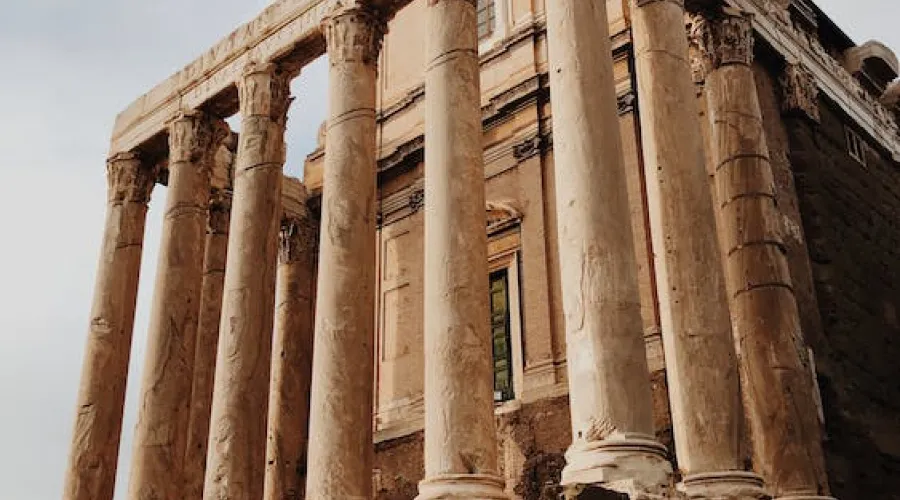
Tips for your visit
- Roman Forum and Palatine Hill Tickets: Purchase your Roman Forum tickets and Palatine Hill tickets in advance to skip the lines and save time. Consider getting a combined ticket for both sites for added convenience.
- Opening Hours: Check the Roman Forum and Palatine Hill opening hours to plan your visit accordingly. These historical sites are best explored during daylight hours, so plan to arrive early for a full day of exploration.
- Guided Tours: Consider joining a guided tour to gain a deeper understanding of the historical significance and stories behind the ruins.
- Footwear: Wear comfortable walking shoes as you’ll be exploring extensive archaeological grounds. The terrain can be uneven, so proper footwear is essential.
- Sun Protection: During the warmer months, protect yourself from the sun with sunscreen, a hat, and sunglasses. Staying hydrated is also important.
- Map and Guidebook: Pick up a map or guidebook at the Roman Forum entrance to help navigate the extensive ruins and learn about the different sites.
- Palatine Hill Entrance: Start your visit at the Palatine Hill entrance (usually less crowded) for a quieter and more contemplative introduction to the ancient world.
- Ancient Roman Ruins: Take your time to explore the Roman sites and ancient Roman ruins. Imagine the vibrant city life that once thrived here as you wander through the impressive archaeological remains.
- Photography: Capture the beauty and history with your camera, but also take moments to absorb the atmosphere without distractions.
Tickets
Unlock the wonders of ancient Rome with Roman Forum and Palatine Hill tickets. For just €22, these combo tickets offer access to the Colosseum, Forum Romanum, and Palatine Hill, ensuring you explore the city’s historical gems seamlessly. Buy your Roman Forum tickets online in advance, as on-site availability is limited. Enjoy special rates at €2 for children (0-17 years) and €6 for EU students (18-25). For an immersive experience, choose the Roman Forum, Palatine Hill, and Imperial Forum package at €26. Elevate your visit with a combo ticket including the Colosseum Arena Floor for only €29. Book now and delve into Rome’s timeless history.
How to arrive
Arriving at the Roman Forum and Palatine Hill is convenient due to their central location in Rome. Here are various transportation options:
By Metro: Take Line B (the blue line) and get off at the “Colosseo” station. From there, it’s just a short walk to both the Roman Forum and Palatine Hill.
By Bus: Several bus lines serve the area near the Roman Forum and Palatine Hill. Buses 60, 75, 84, and 85 stop at or near the Colosseum, which is a stone’s throw from these attractions.
By Tram: Tram Line 3 also stops at the Colosseum, providing easy access to the Roman Forum and Palatine Hill.
On Foot: If you’re exploring Rome’s historic center, it’s quite feasible to reach the Roman Forum and Palatine Hill on foot. The attractions are within walking distance of many other landmarks, such as the Colosseum, the Capitoline Hill, and the Circus Maximus.
By Taxi: Taxis are readily available in Rome, and you can simply ask your driver to take you to the Roman Forum or Palatine Hill.
